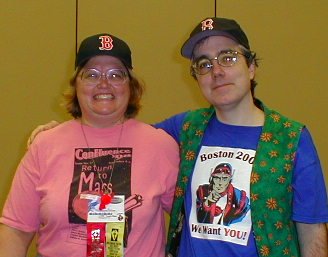I bought a Nook e-reader about a week ago, and I just finished reading the first book I bought in eBook format: Arthur Conan Doyle's The White Company (I had previously read a PDF of John Scalzi's novella The God Engines on my daughter's Nook, but that was much shorter and was a PDF and not a format actually designed to be read on a device like the Nook, so it didn't really provide as good a view of what reading on the Nook is like.
I really liked the experience. Reading on the Nook feels in many ways very similar to reading a real book. The form factor is similar. The way you hold it is similar -- even more so if like me you buy a cover for the Nook that flips open like a book. Navigation is similar, with a simple button on the side for paging forward or back. You can also set bookmarks to allow you to jump to a previously marked spot, and many books come with tables of contents that allow you to navigate to predefined locations. There is also a search capability, though I haven't yet used that. (I also haven't used the ability to add notes or to highlight text.) Even nicer, the Nook, while heavy enough and large enough to feel "real" (unlike, say, a smart phone), it's light enough so that no book can make your arm feel tired after a while.
In summary, I'd give a very solid recommendation to the Nook for reading many types of books. What won't work on a Nook? I'm not planning on buying major history books, since many good ones include lots maps, which are best viewed as you read. I'm currently reading the Landmark Herodotus, which features hundreds of maps, and I'm often reading with fingers marking one or more maps that I keep looking back and forth at as I read. This wouldn't work nearly as well on a Nook. Likewise, I doubt most textbooks would work well, again because it's more difficult to do frequent flipping back and forth to multiple locations.
I've said what the Nook has, but I haven't said what I think it's missing. The two big things I've run into so far is the ability to organize your library better. The current "by author, by title, by date" views are fine if you have a dozen books, but will be a pain when I have hundreds. And for navigating withing a book, it really needs a "go to page" feature, where you can specify a page number.
As for The White Company, it's a good historical novel by Doyle. It's set during the Hundred Years War between England and France, and follows Alleyne, a young man who grew up in a monastery but now finds himself out in the world. He connects with two men -- another outcast from the monastery and an archer, back from the wars to recruit Sir Nigel Loring to return to lead the White Company. They meet Sir Nigel, Alleyne falls in love with Nigel's daughter, and they (the men, not the daughter) head off to war. All along the way, they have adventures, tangling with pirates, rescuing a young woman and her father from thieves, jousting with mysterious knights, and so on. It's all great fun.
The character of Nigel sometimes seems like a cross between Don Quixote and the characters in those romances of chivalry that Cervantes was responding too. He is over gentle and over mannered to a fault, at one point even urging the Black Prince to put him to death rather than going back on his oath to hang the man who was Captain of the White Company. At his extreme, he can be exasperating, but the great cast of characters around him makes up for that.
It all concludes in a major battle, with the White Company pitted against a much larger Spanish army. Nigel's chivalry frankly gets many killed and almost gets the main characters killed, but it does give Alleyne a chance to distinguish himself. That, coupled with the timely news that his nasty, cowardly brother in England has been killed and that Alleyne is no longer landless, means that he can wed Nigel's daughter. Which of course he does on returning to England, arriving just in time to save her from going to a nunnery.
Again, great fun if a bit implausible. The ebooks also includes Doyle's other novel about Sir Nigel (Sir Nigel), which I hope to read sometime in the next few weeks.

